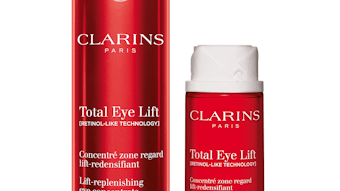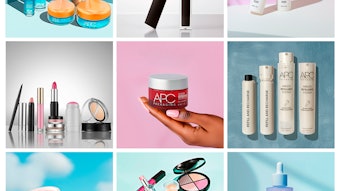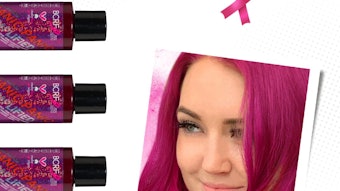- One of the very best ways to internalize and externalize your brand and, therefore your packaging, is to be the consumer.
- Brand and packaging personality needs to be authentic.
- Once you’ve cemented your brand’s personality and learned to think like your consumer, you can allow package designers and creatives to execute.
Brand owners are continually looking to expand their knowledge of how their product can break through on-shelf. With shrinking retail real estate and decreasing advertising budgets, it’s difficult to figure out just how to get your package to “speak” to your consumer. “I admit, I have like 20-seconds to actually look at anything here” said Bettina, a Sephora shopper who Axen Research interviewed in Chicago.
Savvy companies such as Benefit Cosmetics have figured out the best way for a package to standout in the crowd is for that package to have a winsome personality all on its own. Benefit’s famously sassy packaging has a way of adding fun and levity to the business of beauty—an area that is otherwise riddled with doubts and insecurities. By offering up a “we’re-all-in-this-together-sister” sort of vibe, Benefit adds a whole new level of moxie to the world of cosmetics. “I just love the whole tone of Benefit. I feel like it just gets it” said, shopper Jessica, 28.
Take, for example, the brand’s new mascara, which is aptly called “Yes, They’re Real.” The film noir packaging matched with the clever quip of the product name is nothing short of genius. Why? Because it gives the whole product story—there’s a voice and a strong sense of personality. This kind of product naming and packaging design speaks to the kind of design-centered, experience-driven, product development that wins with consumers.
As Kris, a San Francisco native, puts it “I’ve been buying Benefit since I was in high school. Its cute-sexy packaging gets me every time.”
I spend six out of seven days a week interviewing consumers about their innermost thoughts, aspirations and ideals. Sometimes we’re talking about floor cleaners, other times we’re discussing financial aid options, occasionally it’s toilet paper... but 100% of the time, we are talking about emotions—the kind of emotions that drive us to buy brand name products and the promise of a better life for our kids or maybe just our skin. The point is that we all dream and we all aspire and we all shop. And when we are rolling our carts at Target or perusing the shelves at Sephora, we are looking for a reflection that speaks to our inner-longing, our inner dialogue. And this is where packaging comes in. The best packaging invites, reassures and delights. The best packaging both acknowledges and elevates the consumer. There are many techniques for this but let me give you a few of my personal favorites:
Benefit. Please see glowing commentary in paragraph two. Their products practically whistle and wink from the cosmetic shelf where they are perched.
Another brand package that has personality-plus is certainly Method. The brand owners have created a very clear brand personality that extends to its packages. Method revolutionized the shape of cleaning by inventing bottles that are worthy of display in a modern art museum. Its “People Against Dirty” is a memorable and exacting tagline that speaks to the persona of its products.
Trader Joe’s has always been savvy with its private label brand persona. TJ has done it again in the otherwise “dry” category of paper goods. TJ’s private label tissue has a tongue-in-cheek, vintage chic package that elevates “Kleenex” to a whole new level.
It actually has taken the bold step to personify tissue paper with cute messages to the consumer such as “I’m here when you need to pick-up icky things. Kindly, Tissue.” Or “I’m there when you run out of toilet paper. You’re welcome, tissue”. “I felt myself oddly reassured, by a box of Kleenex,” says Dianne, a Trader Joe’s shopper from St. Louis Park, Minnesota.
So how do you apply these ideas to your packaging? First and foremost, personality needs to be authentic. Here are three important lessons to consider in taking your brand/package to charm school:
1. Discover Your Brand’s Personality
There are several ways to uncover or re-discover your brand’s personality. One of my favorite techniques for conducting this research is called a Brand Essence Study. This study allows you to uncover and understand your brands’ attributes, promises and overall story. At the end of the study, you have a full report card of what your brand means to your customers and how you can position yourself to win with these customers and win-over new customers. It’s genius (like a Myers-Briggs for brands) and it gives you the key insights you need about your brand’s personality.
2. Be Your Consumer
One of the very best ways to internalize and externalize your brand and, therefore your packaging is to BE THE CONSUMER. Once you have discovered your brand’s personality, get in the shoes of your customer to understand how your brand is perceived through your packaging on the shelf. This requires in-context research (in-store, in-home) followed by a one-day session in which you can create a profile for your consumer. By getting this kind of intuition about your consumer, you can better guide decisions and creative. Once you create this kind of “brand architecture,” it pays back in spades.
3. Let Your Packaging Do the Work
Once you’ve cemented your brand’s personality and learned to think like your consumer, you can let your package designers and creatives do the rest. With a clear vision of your brand and your brand’s personality, packaging simply becomes the invitation to the party, the welcome mat that draws people in.
Perhaps this whole matter of packaging with personality can best be summed up by a recent and popular tweet, “Beauty fades but personality lasts a lifetime.” We couldn’t agree more.
Jennifer Axen Karsh is the founder and president of Axen Research—a boutique market research firm located in Los Angeles. She has spoken widely on the subject of qualitative research and is a specialist in consumer anthropology. She has written for publications including Allure and The Onion, and has authored two books—including The Stripper’s Guide to Looking Great Naked and Anything You Can Do, I Can Do Better (Chronicle Books).









